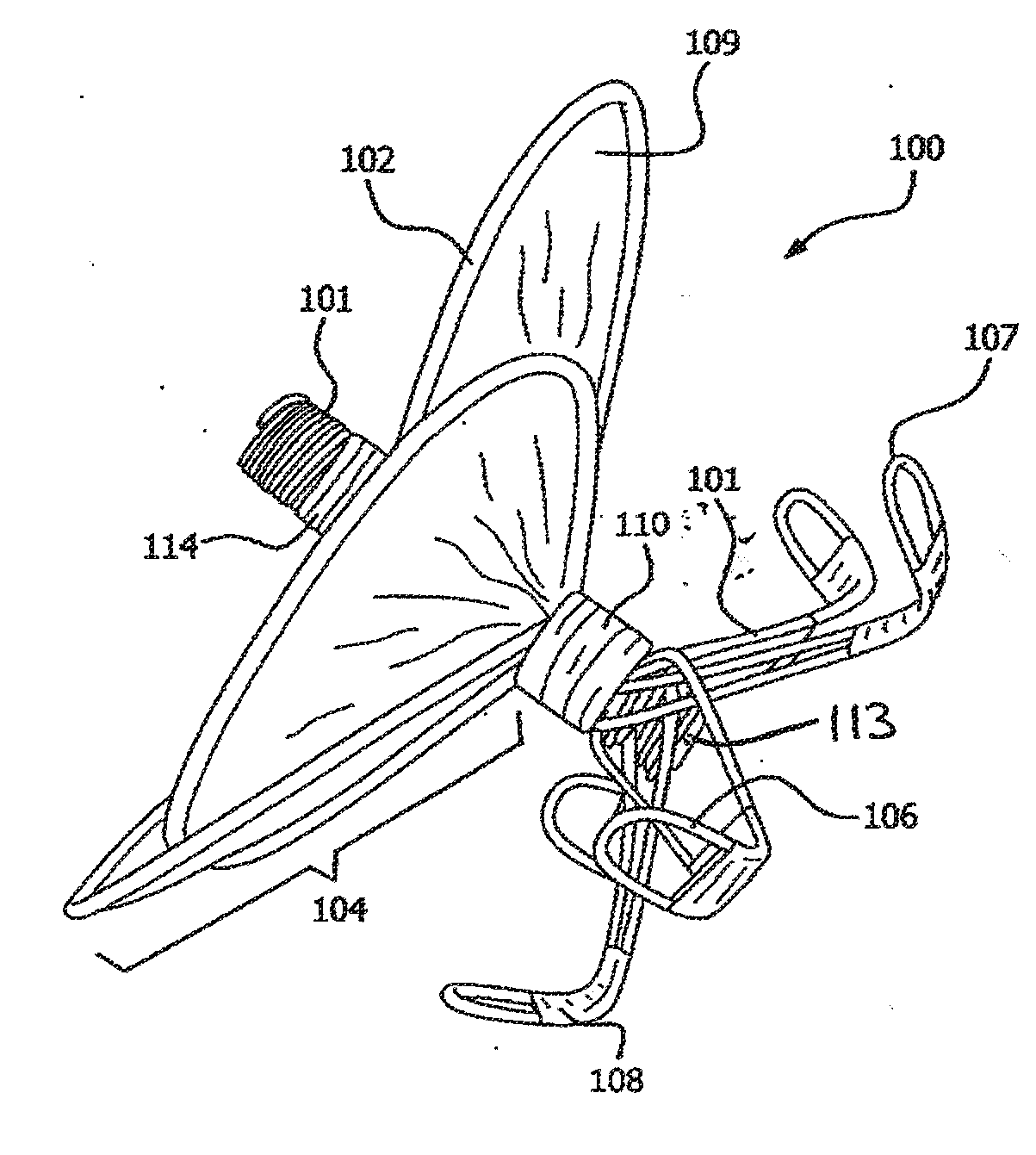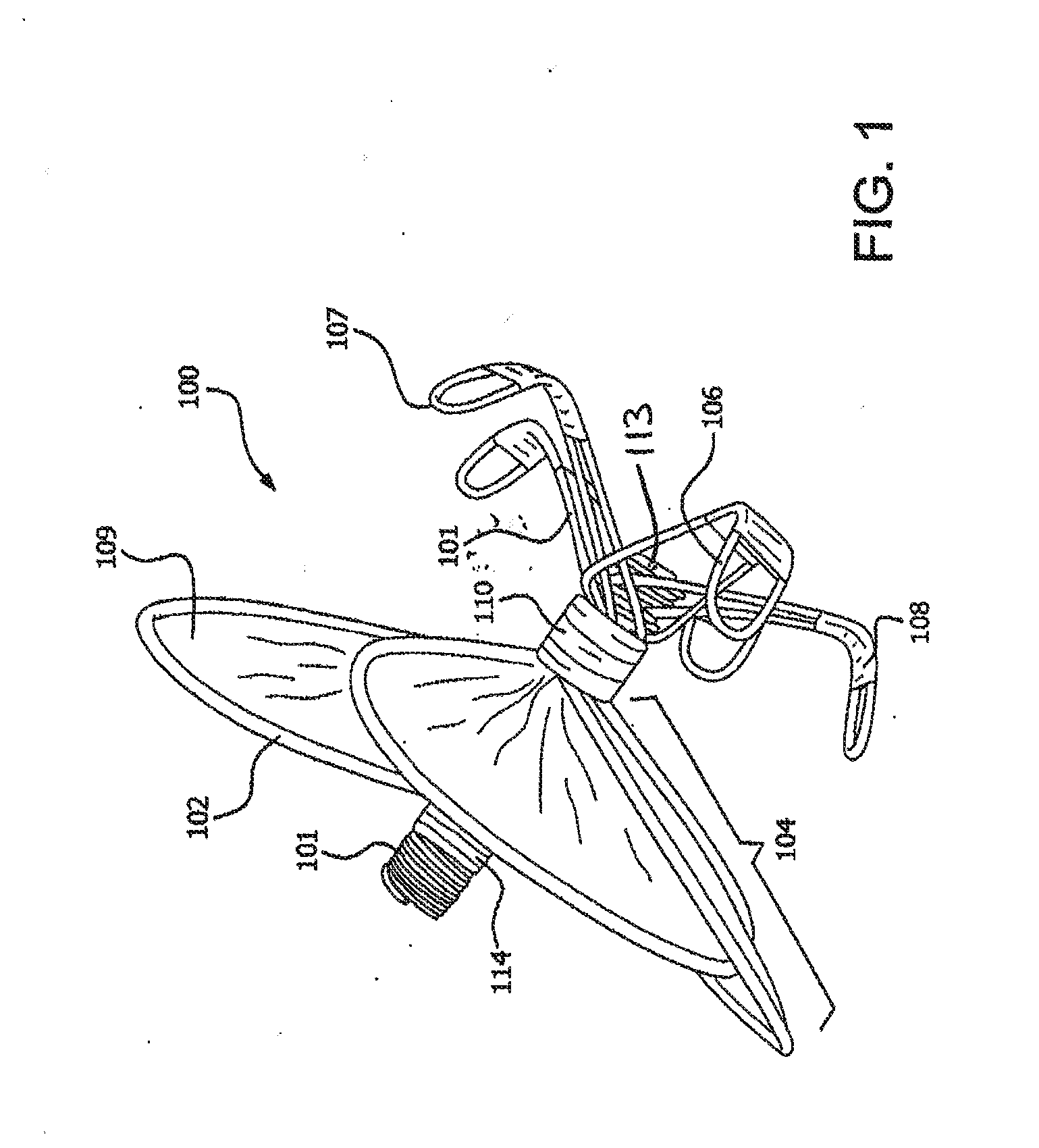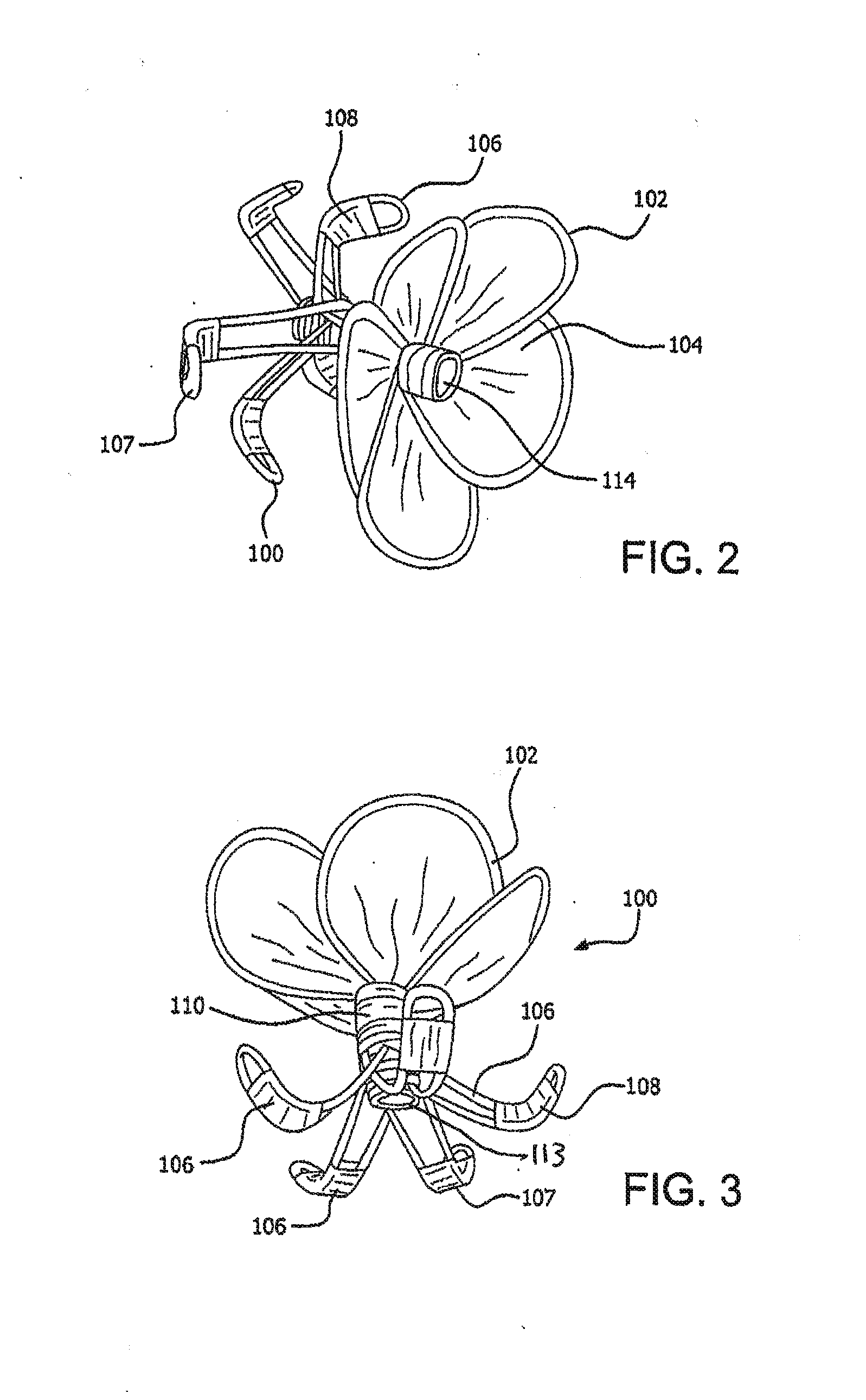Left atrial appendage occlusive devices
a technology of occlusive devices and atrial fibrillation, which is applied in the field of left atrial appendage occlusive devices, can solve the problems of low cardiac output, irregular and turbulent blood flow in the vascular system, and the patient with atrial fibrillation typically has a significantly decreased quality of li
- Summary
- Abstract
- Description
- Claims
- Application Information
AI Technical Summary
Benefits of technology
Problems solved by technology
Method used
Image
Examples
example 1
[0124]An about 1 meter length of 10% platinum drawn filled nitinol wire (Fort Wayne Metals, Fort Wayne, Ind.) with a diameter of about 0.23 mm is obtained. The specific length of the wire may or may not be measured, but the wire should be long enough to complete the winding pattern as described in the following paragraph. The wire is obtained having been electropolished. Electropolishing nitinol wire imparts certain well known properties, such as spontaneously forming a titanium dioxide layer on the surface, selectively reducing the amount of nickel on the surface of the wire, and removing some of the stresses in the wire thus improving fatigue.
[0125]A base jig 8 as described in FIG. 11 is obtained. A knot is tied into one end of one length of an about 0.5 meter long wire and the unknotted end is fed through a wire feed hole 10. Two additional lengths of wire (about 1 meter each) are folded in half and the free ends are fed through the remaining four feed holes 12, 14, 16, 18, with ...
example 2
[0158]An article is constructed in the same manner, using the same materials, as Example 1 with the following exceptions. The film tube is not applied as a tube, but rather it is slit longitudinally and the resulting flat sheet is used to cover the nitinol frame. Without tensioning the occlusive member, the sheet is draped over the top frame petals and the edges of the sheet are gathered and secured around the center eyelet. The occlusive component of the resulting article has a cupped occlusive component with a flat proximal surface and a cupped distal surface as shown in FIG. 9.
example 3
[0159]An article is constructed in the same manner, using the same materials, as Example 1 with the following exceptions. The cupped occlusive member and the anchor component are detached from each other by clipping the center eyelet by hand. An ePTFE tube with a diameter similar to that if the outer diameter of the eyelet shown in FIGS. 19A-19B is procured and secured to the distal eyelet of the cupped occlusive member and the proximal eyelet of the anchor component. The tube is secured by overwrapping tape containing FEP as previously described.
PUM
 Login to View More
Login to View More Abstract
Description
Claims
Application Information
 Login to View More
Login to View More - R&D
- Intellectual Property
- Life Sciences
- Materials
- Tech Scout
- Unparalleled Data Quality
- Higher Quality Content
- 60% Fewer Hallucinations
Browse by: Latest US Patents, China's latest patents, Technical Efficacy Thesaurus, Application Domain, Technology Topic, Popular Technical Reports.
© 2025 PatSnap. All rights reserved.Legal|Privacy policy|Modern Slavery Act Transparency Statement|Sitemap|About US| Contact US: help@patsnap.com



